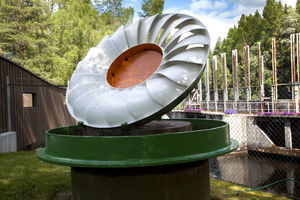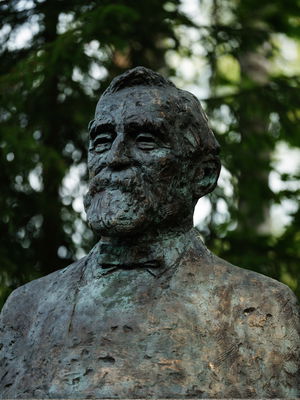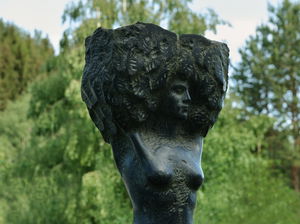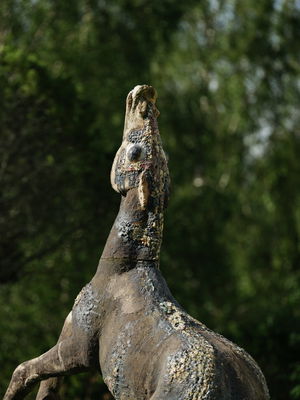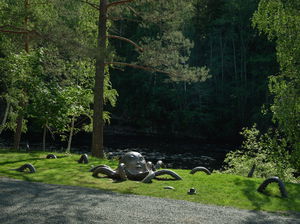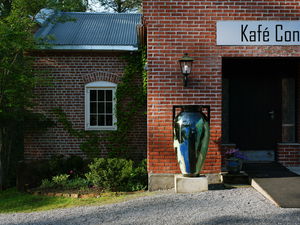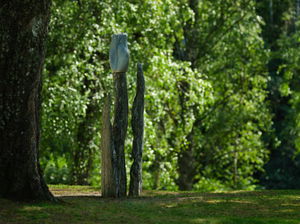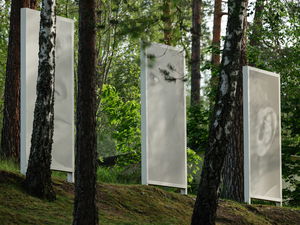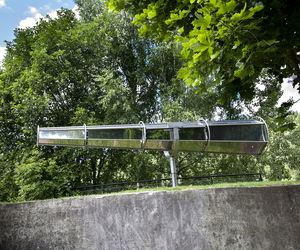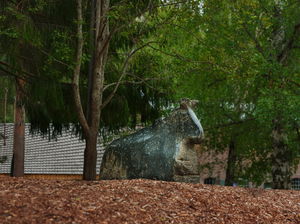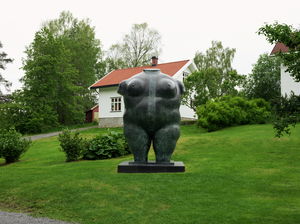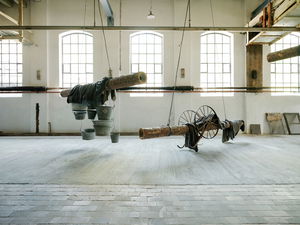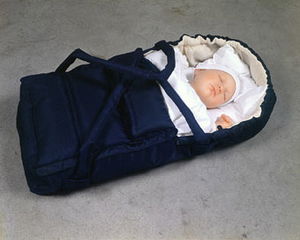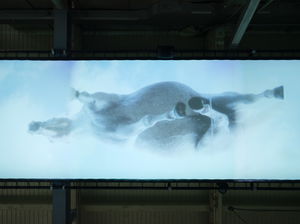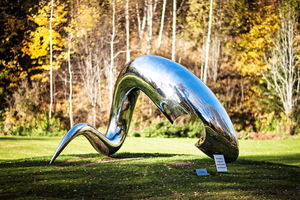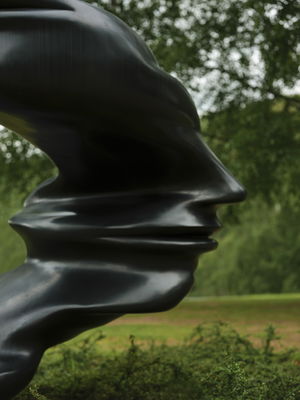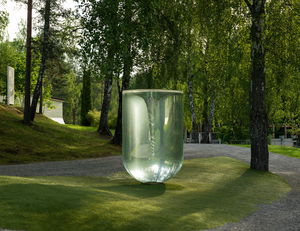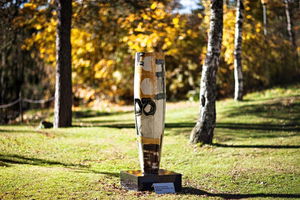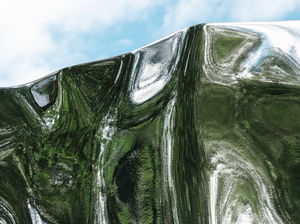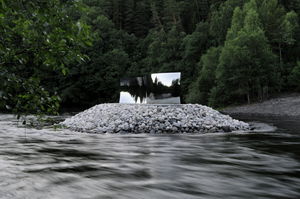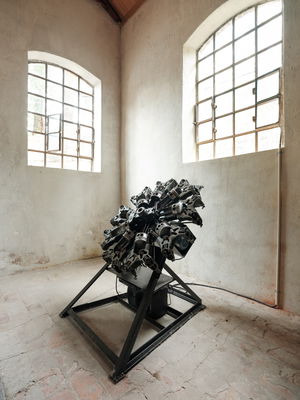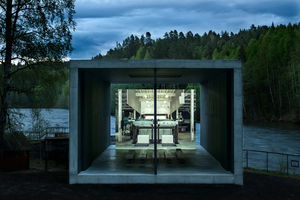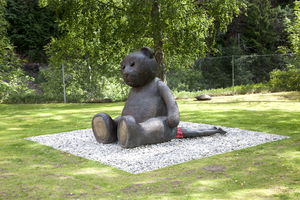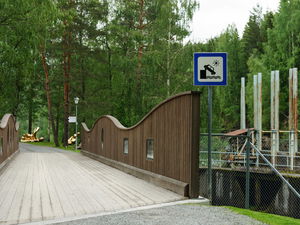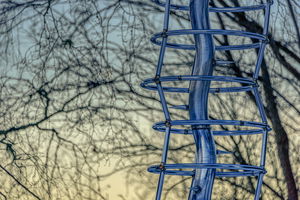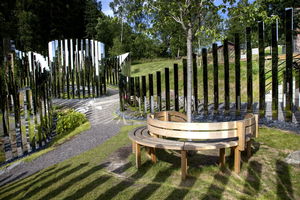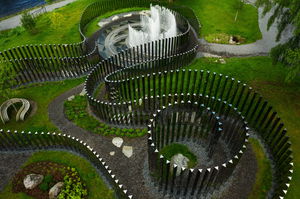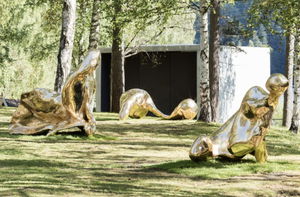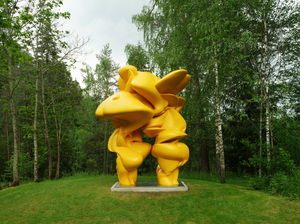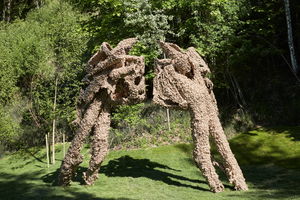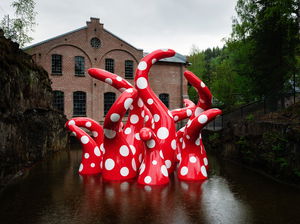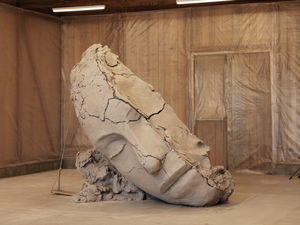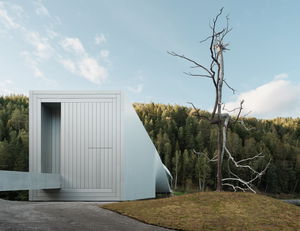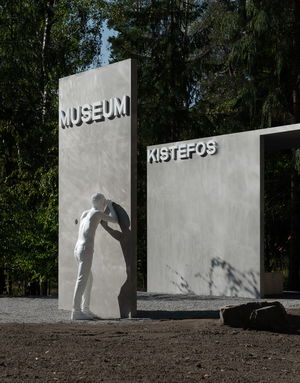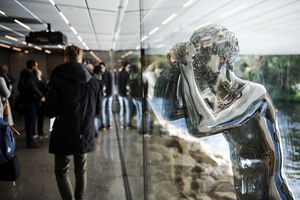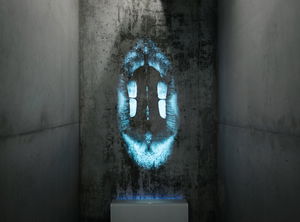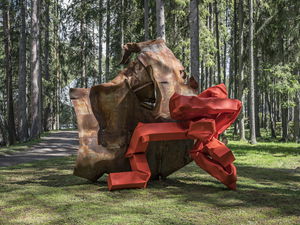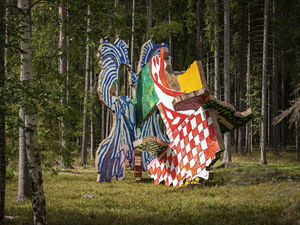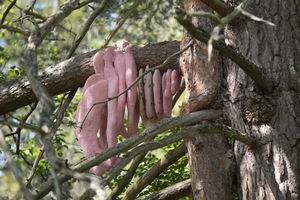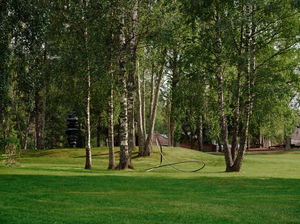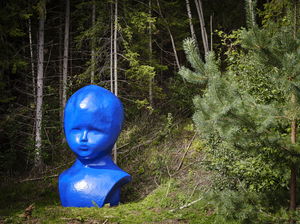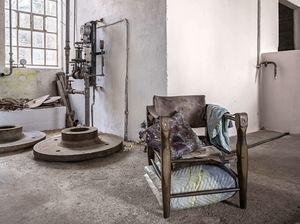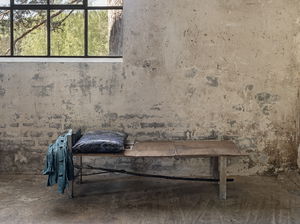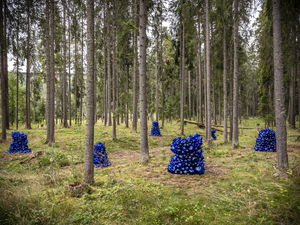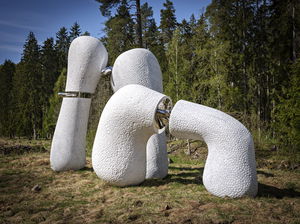“A DEADLY SLUMBER OF ALL FORCES”
by Ida Ekblad

A DEADLY SLUMBER OF ALL FORCES by Ida Ekblad. Photo: Vegard Kleven.
A DEADLY SLUMBER OF ALL FORCES
- Unveiled 2021
- Materials Bronze, paint, stainless steel
- Dimensions 7.03 m x 10.1 m x 5 m
- Artist Ida Ekblad
- Where Show on map
Ida Ekblad’s monumental sculpture, A DEADLY SLUMBER OF ALL FORCES, is painted by hand and the largest and most important sculptural work of the artist to date.
Ekblads sculpture is a fascinating hybrid of her artistic practices. The work is a sculptural collage made of fragments from her own paintings. Hereby, Ekblad creates a mesmerizing visual experience with dynamic, shifting perspectives, calling to mind legendary sculptures like Picasso’s Bust of Sylvette on Bleeker Street in New York, Dubuffet’s Monument with Standing Beast in Chicago or Lichtenstein's Brushstroke sculptures. Ekblad’s abstract composition and masterly use of color open for the viewer a source of unlimited possibilities to associate one's own feelings and memories with this landmark.
The mind is inhabited with trillions of pieces and here is where my source material naturally derives from or is being molded; I chop it and pitch it and move it about, turn it inside out, block print it and roll it up. Although it could be old moldy memories or references, I search for a ‘futurism’ of it all. Whether clogged up of dystopian Philip K Dick-esque nightmares or very sweet, sad post-rave after-glow introspective moods. I hope, like William Wordsworth, that my
Ida Ekblad
future mind 'Shall be a mansion for all lovely forms'.
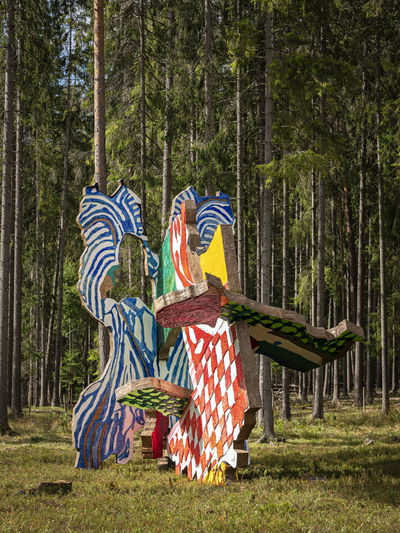
Photo: Vegard Kleven.
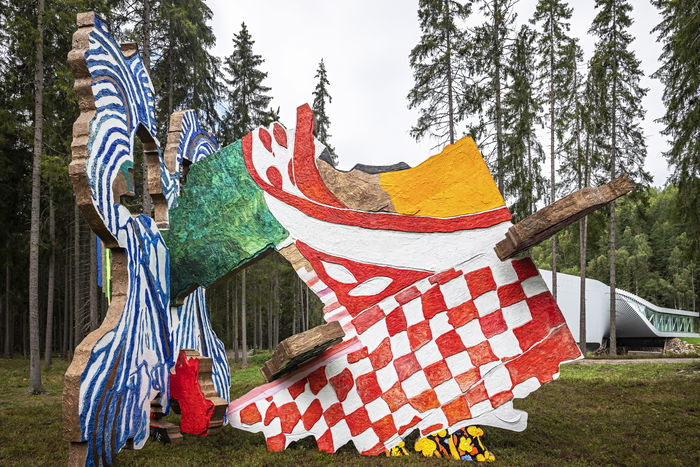
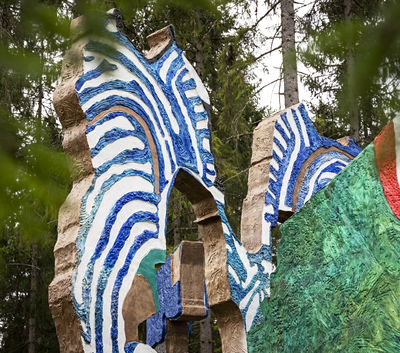
Structurally, the model is composed of four parts that are assembled by applying the cubist method of a jigsaw-puzzle-like composition of elements that are outlined in flat surfaces, like the cut-out of a collage. Ekblad reinvigorates the technique and creates a multi-perspective synthesis of mind and memory. However, while the cubists most often de- and reconstructed a figurative element, Ekblad often uses only abstract patterns in her compositions, like the maritime blue and white Breton stripes which are unfolded like butterfly wings in the topmost element of the sculpture. This form was the main motif of a large triptych which was included in her fantastic exhibition BLOOD OPTICS at the Museo Tamayo in Mexico City last year. The central panel of this triptych depicts this same form; this work, A grain of sulphur in the blood (2018), is now held by the National Museum of Art, Design and Architecture in Oslo. In Ekblad’s sculpture, however, the blue and white form, this time resembling an inkblot of a Rorschach test, is turned on its head so that sunlight can cast its light through the cut-out areas which one can find in the upper part of this form.
Through this opening, a sharp green edge that belongs to the largest element of the sculpture, which is mostly colored in a red and white checkerboard pattern, points its head to the thin and tall third element of the sculpture; this portion is reminiscent, with its monochrome color blocks, of a Mondrian grid. On the opposite side, the fourth element gives the sculpture another perspective twist as it nearly disappears into thin, bronze-colored lines. It perfectly winds itself in a horizontal diagonal around the largest element so that its distinct main grid in dark and light green is only visible from above and below. Hence, this site-specific work for the sculpture park at Kistefos offers, with its multi-perspective and strong vitality, an ever-surprising visual journey for the viewer. Ekblad would suggest to place the piece in nature in the proximity of the new museum building The Twist. The organic form and colorful appearance of the sculpture would provide a perfect addition to the site and enliven the area all year round with the dynamic presence of this masterpiece.
-
01 Ståle Kyllingstad, Installation
-
02 Nils Aas, Consul Anders Sveaas, 1840-1917
-
03 Nico Widerberg, Time
-
04 Beate Juell, Stallion
-
05 Kristian Blystad, Playing horse
-
06 Bjarne Melgaard, Octopus
-
07 Kjell Nupen, Stille, Stille/Mediteraneo
-
08 Kjell Nupen, Mediteraneo
-
09 Edgar Ballo, Blå tulipan
-
10 Anne-Karin Furunes, Christen Sveaas
-
11 Olafur Eliasson, Viewing machine
-
12 Siri Bjerke, Mounts of the Samurai The Third Day
-
13 Fernando Botero, Female Torso
-
14 Tony Cragg, Articulated Column

The energy and shape of the sculpture easily give associations to the surrounding natural landscape, especially the water and the waterfall's fierce power/energy.
-
15 Fabrizio Plessi, Movimenti della Memoria

This installation is placed inside the Wood Pulp Mill
-
16 Elmgreen og Dragset, Forgotten Babies # 2
-
17 Marianne Heske, Homage to Leo the Lion

The sculpture is placed inside the Wood Pulp Mill
-
18 Shintaro Miyake, Welcome to our Planet
-
19 Kristin Günther, Hesten

The sculpture is placed inside the Wood Pulp Mill
-
20 Tony Cragg, I'm Alive

This sculpture, with the fitting title I’m Alive, at first glance looks like a powerful creature meandering forward.
-
21 Tony Cragg, Bent of mind

Bent of Mind looks as though it is constantly growing and changing. The two profiles, which make up the sculpture’s main motive, constantly change character as you move around the sculpture to see them from different angles.
-
22 Petroc Sesti, Energy-Matter-Space-Time
-
23 Magne Furuholmen, Hypnos Descending
-
24 Elmgreen og Dragset, Warm Regards
-
25 Anish Kapoor, S-Curve
-
26 Oldenburg og van Bruggen, Tumbling Tacks
-
27 Thomas Bayrle, Sternmotor Hochamt

You´ll find Sternmotor Hochamt inside the Furnace House, just outside The Wood Pulp Mill
-
28 Marc Quinn, All of Nature Flows Through Us
-
29 John Gerrard, Pulp Press (Kistefos)
-
30 Fredrik Raddum, Teddy - Beast of the Hedonic Treadmill
-
31 Fredrik Raddum, Catastrophic road Signs, Sun
-
32 Per Inge Bjørlo, Slektstrea, Genbanken
-
33 Phillip King, Free to Frolic
-
34 Jeppe Hein, Modified Social Benches Kistefos
-
35 Jeppe Hein, The Path to Silence
-
36 A Kassen, River Man

River Man by the artistic collective A Kassen took form as liquid bronze was poured directly into the waters of the Randselva river.
-
37 Ilya Kabakov, The Ball

The installation, with its location in the midst of nature, can be seen as a commentary on man's relationship with nature.
-
38 Tony Cragg, Castor & Pollux

With Castor & Pollux, Cragg takes a new and radical step in the development of the Rational Beings series. Raw muscle power and animal energy are just some of the things you experience in the encounter with this monumental work.
-
39 Lynda Benglis, Face Off

Benglis visited Kistefos and became inspired by the landscape and atmosphere of the site, Scandinavian mythology, and folklore. The sculpture can be seen as partly frozen waterfall, partly giant.
-
40 Yayoi Kusama, Shine of Life
-
41 Mark Manders, Silent Studio
-
42 Giuseppe Penone, Identity
-
43 Elmgreen & Dragset, Point of View, Part 1
-
44 Elmgreen & Dragset, Point of View, Part 2
-
45 Tony Oursler, Scat Skat Skatt
-
46 Lawrence Weiner, Stedsspesifikk skulptur

This sculpture is placed in two different locations in the park.
-
47 Magne Furuholmen, The Birthright

Text and letters have always been central as a pictorial element in Furuholmen's work. What happens if you deconstruct sentences, break them down into single words or put them together in new combinations?
-
48 Carol Bove, PASANASAP
-
49 Ida Ekblad, A DEADLY SLUMBER OF ALL FORCES

Ekblads sculpture is a fascinating hybrid of her artistic practices. The work is a sculptural collage made of fragments from her own paintings.
-
50 Pierre Huyghe, Variants

The work comprises artificial intelligence, 3D-scanned objects, living creatures and organisms, and offers something completely unique in the sculpture park.
-
51 Tone Vigeland, Skulptur I, 2022

Abstract in idiom, Sculpture I, 2022 almost seems like a distorted piece of jewellery as it changes expression every time you move around it.
-
52 Marianne Heske, Blue
-
53 Tatiana Trouvé, The Guardian

Tatiana Trouvé has drawn inspiration from the surroundings, history, and humans who shape Kistefos, painstakingly composing her sculptural objects as memorials of what was, and guardians of what is.
-
54 Tatiana Trouvé, Bench

The essence of Kistefos is encapsulated in the sculpture, inviting contemplation and reflection. The work allude to the workers’ community which was a defining feature of Kistefos until the mid-1950s, while also mirroring distinctively Norwegian values and ruminating on the universal human experience.
-
55 Kader Attia, Whistleblower

Kader Attia’s Whistleblower is a poignant reflection on the tension between natural elements and human-made objects. The inspiration for the work comes from the sound created when the wind passes through the neck of a bottle—a simple yet powerful symbol of the interaction between nature and culture.
-
56 Nairy Baghramian, Resting Arms

The sculpture, a highly abstracted portrait of primary joints in the body, was made in white Carrara marble and steel. By highlighting the vulnerability of the human form, Baghramian challenged the traditional connotations of durability and monumentality often associated with these sculptural materials.
